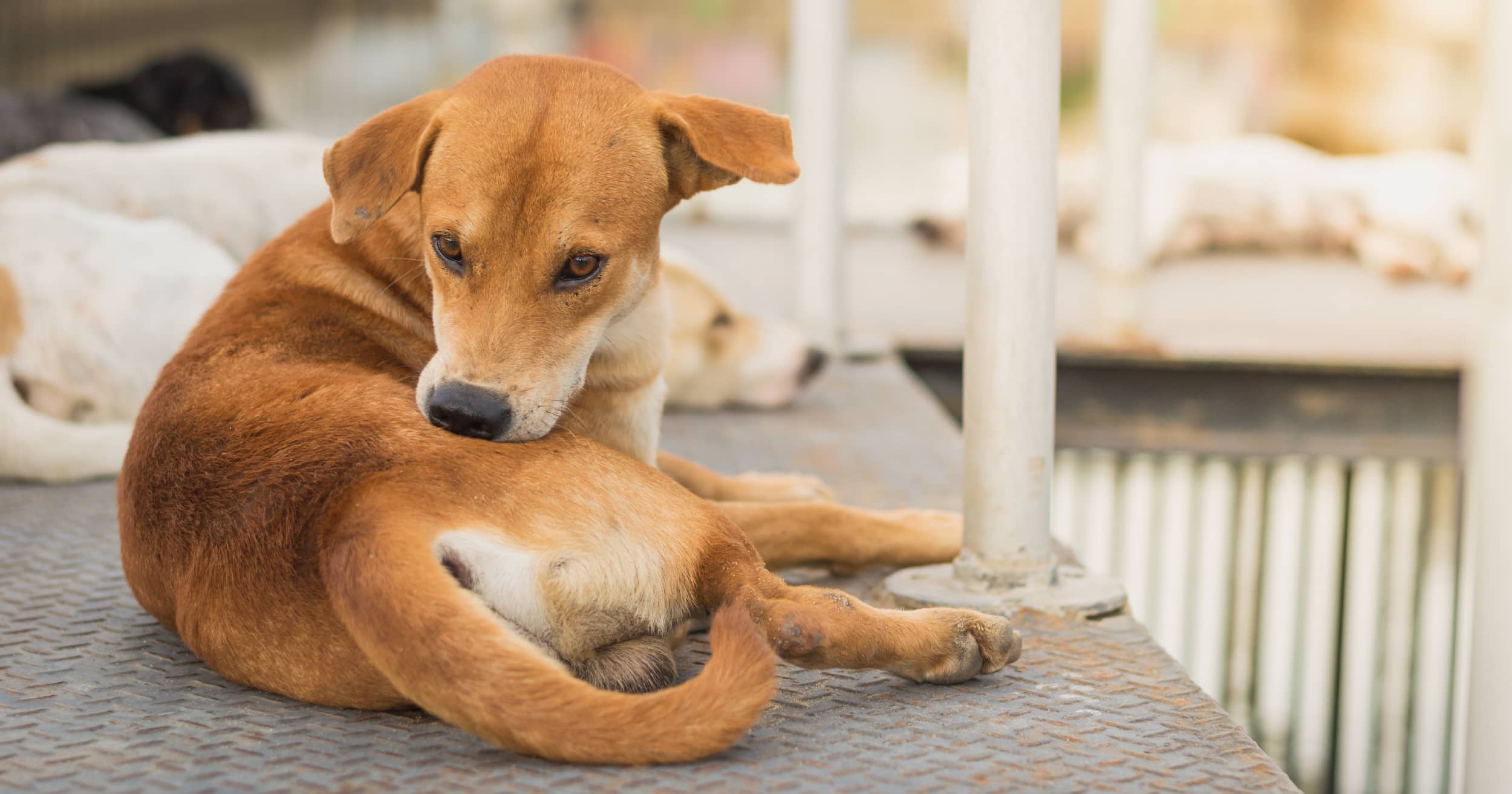Fleas aren’t just annoying for dogs. These small blood-sucking parasites can cause serious health issues, including spreading tapeworms (to pets and humans) and causing anemia in the case of a severe flea infestation. Fleas are good at avoiding detection, but there are signs that you can look for, including flea dirt and excessive itching.
Signs of Fleas on Dogs
It’s a scary thought, but only around 5 percent of dog fleas are actually adult fleas — the rest are in various stages of the flea life cycle (eggs, larvae and pupae). The immature flea life stages can be found in the cracks between hardwood, laminate or floor coverings, in bedding or upholstered furniture. Eww!
Fleas are hard to find, but if your dog has fleas, you may notice that they are itchy and more restless than usual, and are licking, scratching or chewing (like they’re eating a corn cob) in specific areas. Other symptoms include hair loss or bald spots due to the excessive licking and chewing, and your dog’s skin may be bumpy from all of the scratching.
Can You See Fleas on Dogs?
When you look for fleas on your dog, you need to be quick since fleas move fast and can be hard to spot. These tiny parasites are only 1/16 to 1/8 inch tall and are dark brown, although they become lighter in color as they start to ingest blood. Typically, you can only spot fleas easily if a dog has a severe flea infestation.
If you suspect your dog has fleas, check the armpits and groin first. Adult fleas love to hide in these areas because they are warm and protected. Next, check your dog’s tummy, where the hair is usually thinner and fleas are easier to spot.
How to Tell If Your Dog Has Fleas
As we mentioned, fleas themselves can be hard to spot in typical cases, so an alternative is to look for flea dirt (flea droppings) which are dark specks of digested blood that look like pepper on the dog’s fur or skin. Using a flea comb, collect the suspected flea dirt and place it on a wet, white paper towel. If it is flea dirt, the digested blood in the flea feces will turn the paper towel red.
What Do Flea Eggs Look Like on a Dog?
Flea eggs are even harder to spot than adult fleas on dogs, especially if your dog has light-colored fur. They are tiny, whitish, oval-shaped specks that resemble a grain of salt. If you do see some, you might think flea eggs are just dried skin flakes.
Dog Flea Bites Can Cause Allergies
Fleas are one of the most common causes of allergies in dogs, and the trouble can start from just one flea bite. Some dogs are allergic to flea saliva and can develop flea allergy dermatitis (FAD) from flea bites. For dogs with FAD, skin reactions are often seen along their lower back, thighs, lower abdomen and forelegs. All of the licking and scratching can irritate the dog’s skin and create openings where bacteria and yeast can enter, leading to secondary infections.
If your dog has flea allergy dermatitis, it is critical to eliminate fleas with a flea treatment and use medications to prevent fleas from reinfesting your dog in the future. Dogs with FAD may also need other treatments to soothe irritated skin and treat secondary infections.
How to Treat Fleas on Dogs
If your dog has fleas, purchase a flea comb that is specifically designed to remove fleas, as well as flea larvae and eggs, from your dog’s coat. Brush your dog’s fur, making sure to brush as close the skin as possible to capture the fleas. As you’re combing, get rid of any fleas you find by dunking the comb in a bucket of soapy water. Some flea infestations may also need prescription medication or medical shampoos to kill the fleas. And because fleas are also in your dog’s environment, don’t forget to treat the inside of your home as well. It can take three or more months to completely rid a home of fleas.
Year-Round Flea Prevention Is Key
Fleas may be most active in warmer months, but they can remain a problem throughout the year in many regions. Along with topical, oral, collar or other preventative flea medications for your dog, there are some simple things you can do around the house to get rid of fleas and prevent a flea infestation.
- Keep grass trimmed around the house to control the environment your dog walks through
- Regularly wash your dog’s bedding
- Vacuum carpets, upholstered furniture and cracks in the floor regularly, and dispose of the contents in a sealed bag so the fleas can’t escape back into your home.
While outdoor dogs typically have more exposure to fleas than indoor dogs, it is still possible for indoor dogs to become infested by visiting dog parks, boarding or grooming facilities or just going potty in areas that are exposed to wildlife or other pets with fleas. So flea prevention is important, even if your dog spends most of their time indoors. And remember that if one pet has fleas, all pets in the household should be treated for fleas.
If you’re concerned about your dog having fleas, your veterinarian is the best resource to help bring them some relief.







